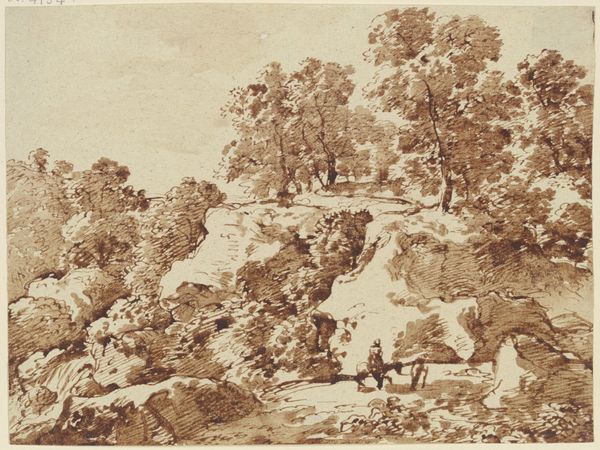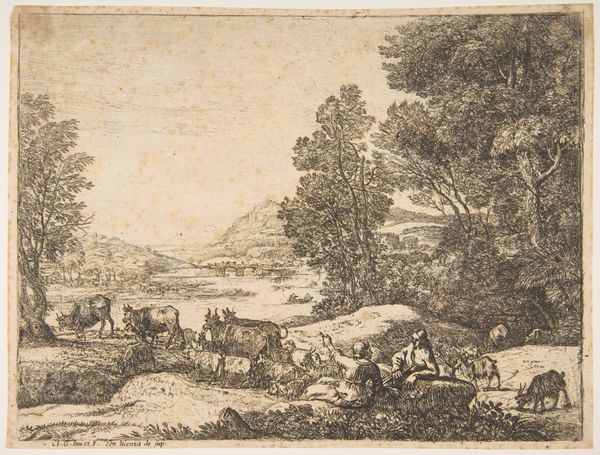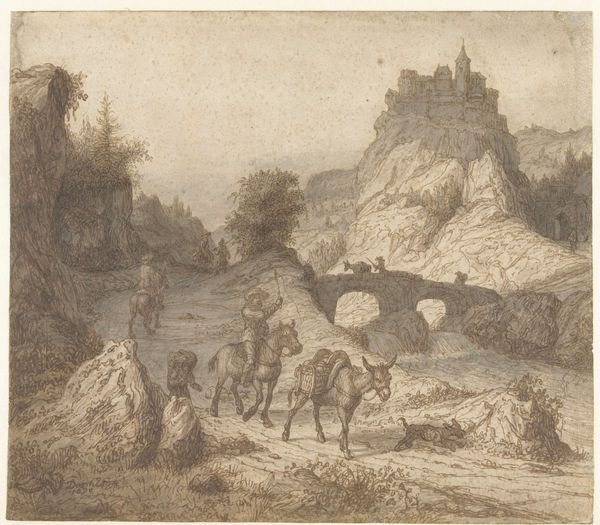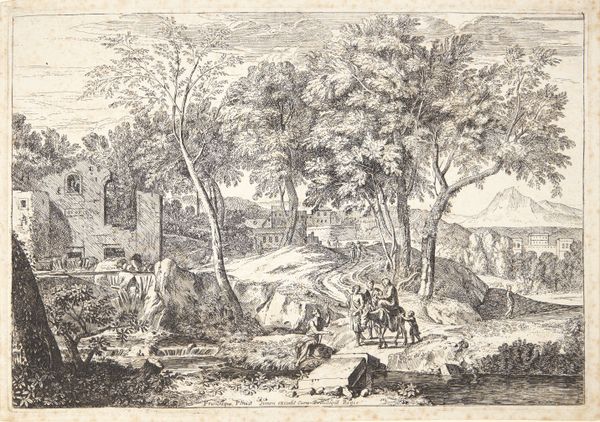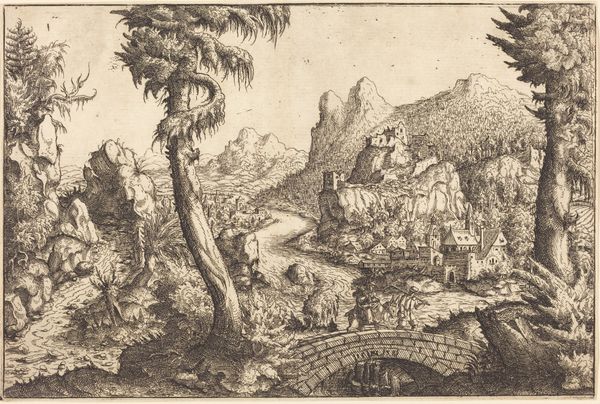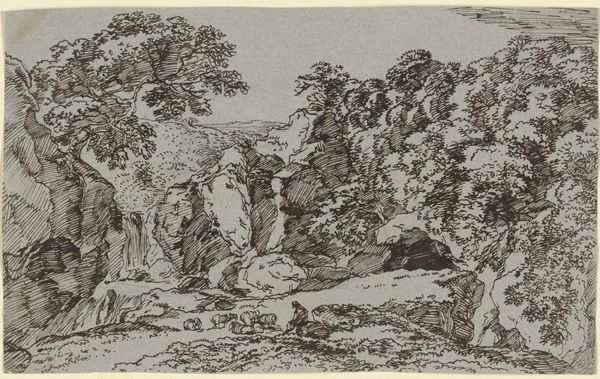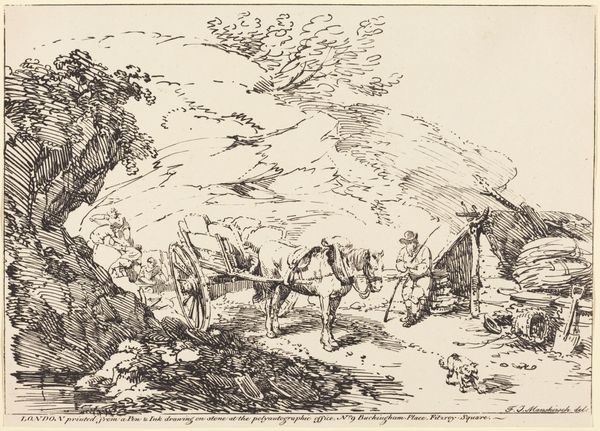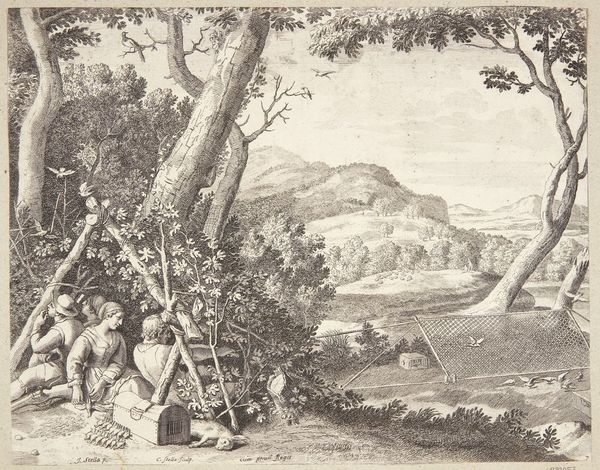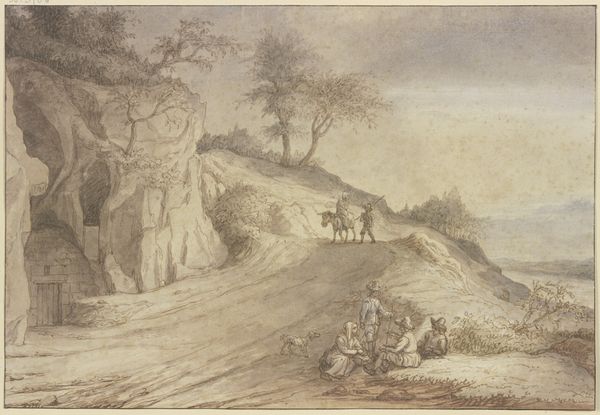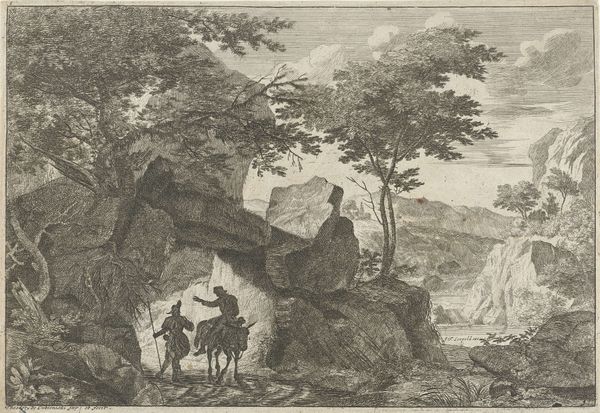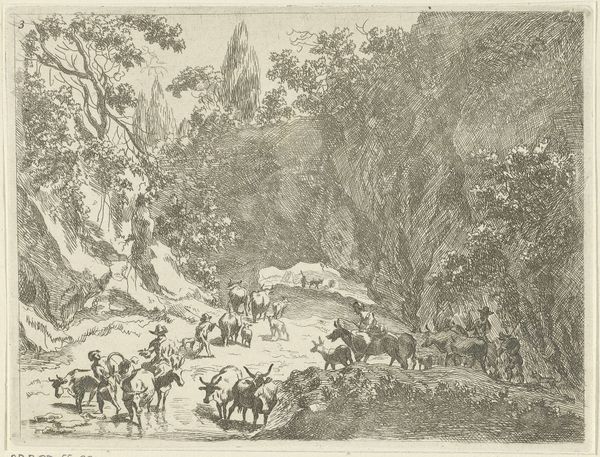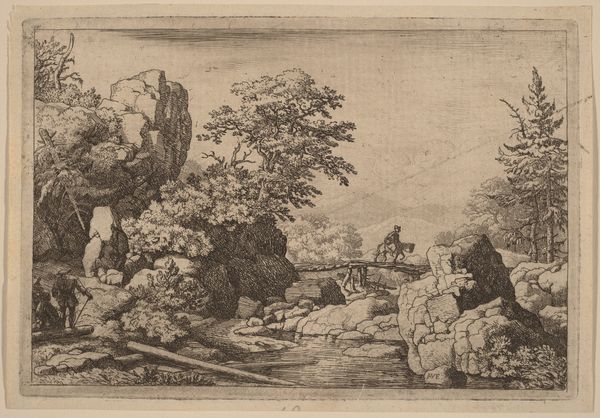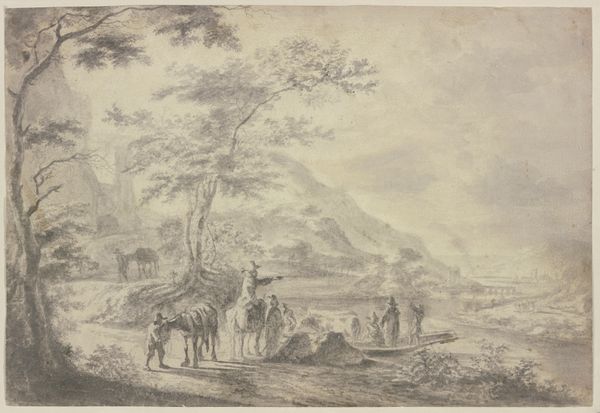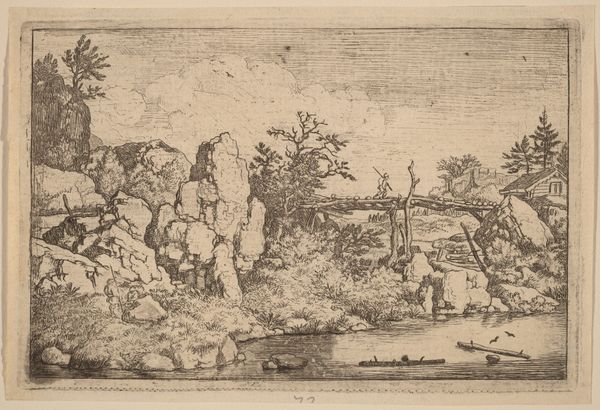
Hirtenszene an einem Brunnen, Schafe und Maulesel nähern sich der Tränke, an der eine Reiterin ihr Pferd tränkt
0:00
0:00
drawing, paper, ink, graphite
#
drawing
#
landscape
#
paper
#
ink
#
classicism
#
graphite
Copyright: Public Domain
Editor: Right, so this is Johann Christian Klengel's "Hirtenszene an einem Brunnen, Schafe und Maulesel n\u00e4hern sich der Tr\u00e4nke, an der eine Reiterin ihr Pferd tr\u00e4nkt" – a scene of shepherds by a well, drawn with ink and graphite on paper. It feels like a really idyllic moment, a snapshot of peaceful rural life. What grabs your attention when you look at it? Curator: It’s interesting, isn't it, how Klengel crafts this almost theatrical vision of rural existence. Notice the placement of the figures, almost like players on a stage. There’s a sense of performance about it – are they truly relaxing, or striking poses? Look at the light; it falls so dramatically on the well and the figures around it. Do you think it adds to that sense of constructed reality? It’s like he's directing us, guiding our gaze. Editor: That's a great point – the theatricality! I hadn’t really considered that, I was too caught up in the details of the everyday, the sheep and the mules. But you're right, the lighting feels deliberate, drawing my eye straight to that well. Curator: Exactly! And think about the period—Classicism, a movement obsessed with order and ideal forms. It wasn’t just about accurately depicting the world, but improving upon it. So, Klengel isn't just showing us a scene, he's offering us an ideal, a curated vision of pastoral bliss. It’s beautiful, but it begs the question: what’s being left out? Where’s the mess, the struggle, the grit? Or is that the point of Classicism, to escape reality? Editor: I see what you mean. The reality might be far removed from the struggle. This idealized image really reinforces that. Thank you! Curator: My pleasure! Every viewing unveils something new; and art's deepest pleasure stems from its ceaseless capacity for novel perception.
Comments
No comments
Be the first to comment and join the conversation on the ultimate creative platform.
